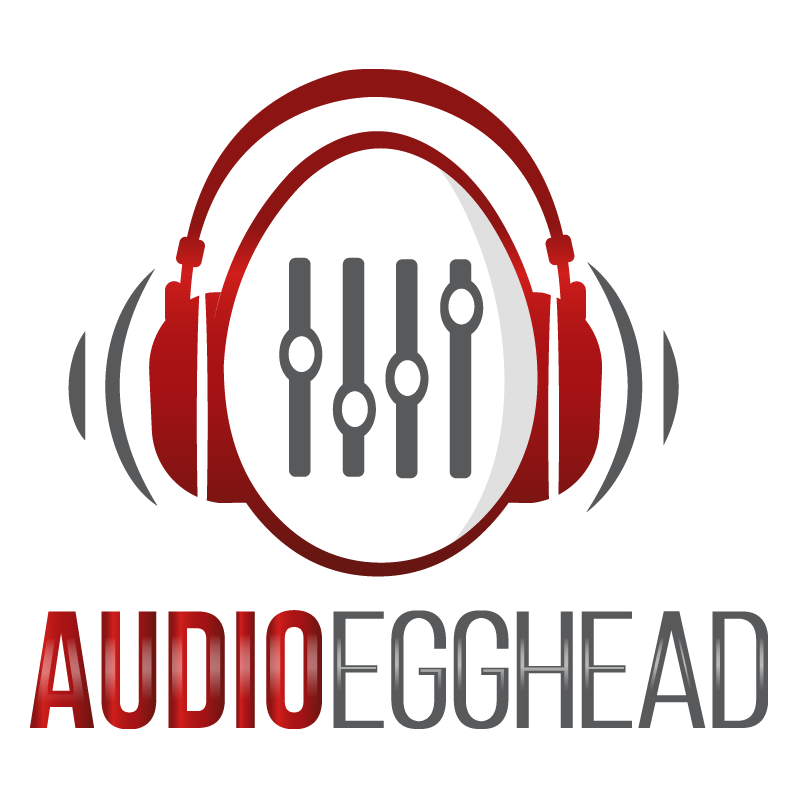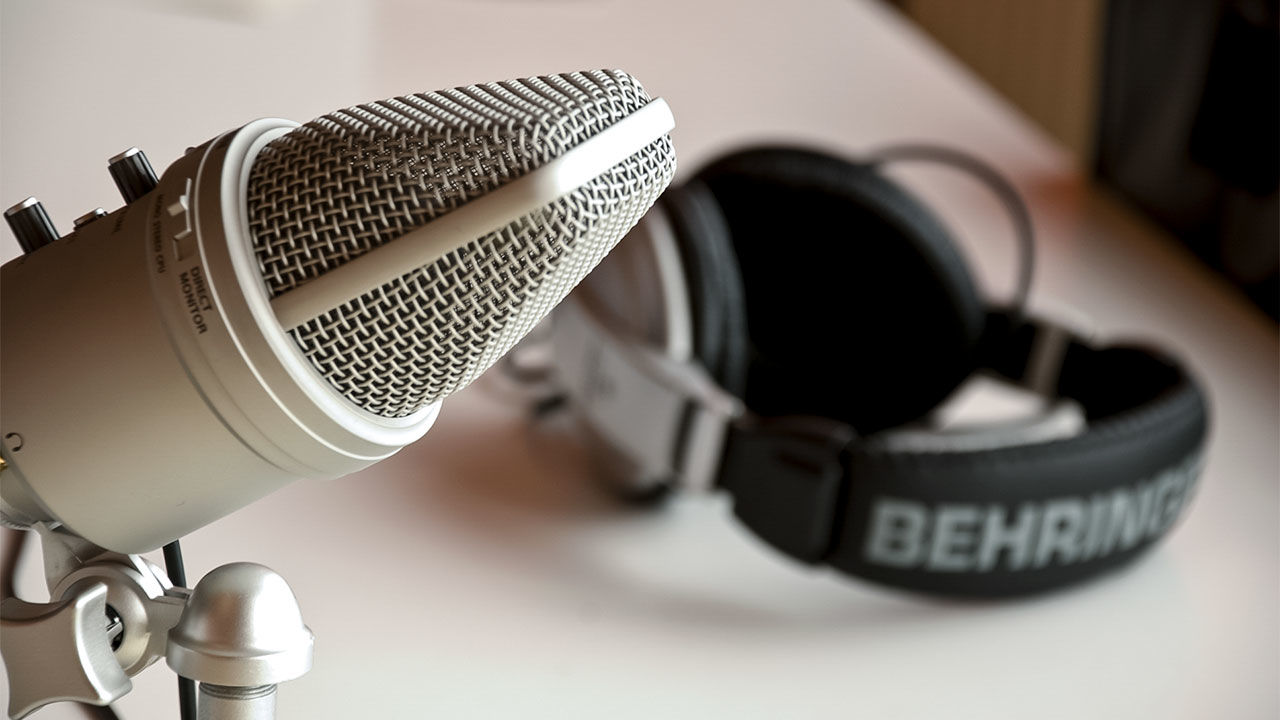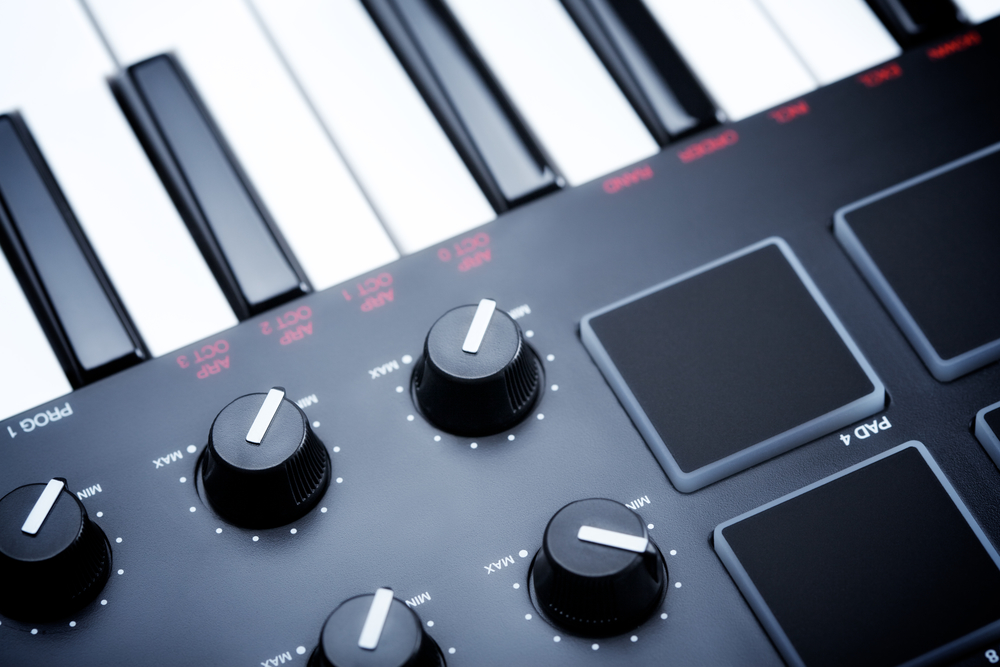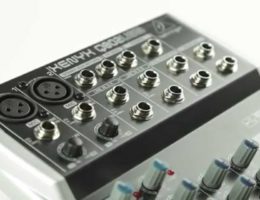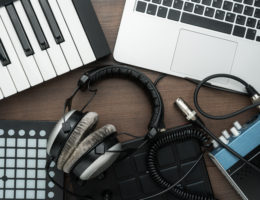Whether you’re an expert in your field or an emerging voice with a strong personality and plenty to say, podcasting is one of the best ways to build an audience. In today’s media-obsessed culture, podcasts give listeners the chance to take a deep dive into their favorite topics without the constant din of commercials and unrelated information. If you’re new to podcasting or looking to upgrade the audio quality of your ‘cast, however, you’ll need to get up to speed on some gear involved. In this article, we’ll help you in your search for the best microphone for podcasting.
In the podcasting world, it’s all about sound. Whether you plan to interview guests in a full-blown recording studio or record rare bird calls captured near secluded lakes, it’s critical that your audio is crisp and clear. With so many mics on the market, however, it can be hard to know what is the best microphone for podcasting, based on those specific requirements. We discovered a broad range of prices, features, and quality levels on the market, but don’t assume you need to take out a personal loan to finance your next equipment purchase.
These days many of the top manufacturers offer mics specifically for podcasting without all the features (and the hefty price tag) of a recording studio mic. While you would likely get a superior sound from a $5,000 recording mic, a dedicated podcasting mic may have features that are more useful to you than an ultra-sensitive frequency range. So if you’re a veteran podcaster looking to step up your game or a total newbie hoping to get your pod up off the ground, read on and see if we can determine the very best microphone for podcasting.
The Best Podcasting Microphones: FAQ
1. What Should I Look for in a Podcasting Microphone?
There’s a lot to considering when looking for the best microphone for podcasting. Some things to look for include size, weight, shape, price, compatibility with mic stands, and if it is a condenser or dynamic mic.
Many entries on our list of options for the best microphone for podcasting have certain specialized features that you may not find in traditional, general-use mics or those used primarily for recording music. These can include USB outputs, onboard effects, and monitoring controls directly on the mic.
Functions like these can be very helpful for podcasters on a tight budget who may not want to invest in other gear like monitoring amps and audio interfaces. For those with a larger budget, you may want to look into a microphone that uses XLR cables and requires an audio interface. It is extremely difficult to achieve zero-latency without an audio interface. Something else you will want to consider and look into is a pop filter that will minimize plosives, which are hard “s,” “b,” and “p” sounds. Having a pop filter will also help eliminate unwanted background noise.
2. How Do Dynamic and Condenser Microphones Differ?
Condenser and dynamic mics both convert sound wave energy into an audible sound, but they do it differently.
Dynamic mics use a sound coil that is housed in a magnetic field. When movements in the air hit this coil, it vibrates at a rate that represents the audible sound it has collected. Condenser mics, on the other hand, use a very sensitive metal plate called a diaphragm.
When moving air hits this diaphragm, it also vibrates and translates movement into sound. Condenser mics are usually more sensitive than dynamic mics, but they are also more fragile. Condenser mics also usually require 48V power from an external source (called phantom power), whereas dynamic mics do not.
4. Which Manufacturer Makes the Best Podcast Microphones?
There are many companies out there today who could lay claim to the crown as the maker of the best microphone for podcasting. Some top names in the category include Samson, Blue, Audio-Technica, Rode, Razer, Shure, MXL, and Heil.
5. Can’t I Just Use My Smartphone?
Technically, yes, you could just record your podcast using the built-in microphone and a voice recorder application on your phone. You could also eat fast food for every meal of the day. We can’t recommend either approach, though. If you’re in a pinch and need to record a special moment before it passes, then, by all means, grab your phone and hit the red button. Just be aware that your audience will definitely notice the difference between a podcast recorded with a good quality mic and one made with a phone.
How We Reviewed Mics for Podcast Recording
For this review focused on identifying the best microphone for podcasting, we dug deep and considered options at a range of different price points. We evaluated 11 mics in total, checking out their features, price, availability, and warranty information. We also offered some brief pros and cons to streamline your decision-making and shopping experiences.
Ultimately, we chose one overall top pick that emerged from our search for the best microphone for podcasting. We’d stop short of saying it’s the perfect mic for every podcaster under the sun, but our top pick delivers an excellent combination and balance of sound quality, durability, and overall value.
Overall Price Range
We found an extremely wide range of prices for solid podcasting mics, but we focused on options that range between around $100 and $1,000. Lower-cost options aren’t necessarily unacceptable or lacking in quality for the price, but most are basic dynamic mics that won’t offer the same range of sonic clarity. The higher-priced mics on this list offer superb sound quality and can easily do double-duty by stepping into a studio recording setting.
What We Reviewed
- Samson Q2U Handheld Dynamic USB Microphone
- Blue Yeti USB Microphone
- Audio-Technica ATR2100-USB Cardioid Dynamic USB/XLR Microphone
- Rode Procaster Broadcast Dynamic Vocal Microphone
- Razer Seiren Elite
- Shure SM58-LC Cardioid Vocal Microphone
- MXL 990
- Blue Snowball USB Microphone
- Heil PR-40 Dynamic Studio Recording Microphone
- Samson Meteor Mic
Samson Q2U Handheld Dynamic USB Microphone
Features
 Samson’s Q2U is a handheld dynamic microphone that offers everything you need to get up and running in one package. It has both an XLR input and a USB output, so this mic can serve as both your recording device and the required interface.
Samson’s Q2U is a handheld dynamic microphone that offers everything you need to get up and running in one package. It has both an XLR input and a USB output, so this mic can serve as both your recording device and the required interface.
It also offers a 1/8″ mini-jack input, so you should have no trouble monitoring your audio signal as you record. This unit offers solid digital conversion at 16 bits and a 48kHz sampling rate. This could be the perfect choice for someone looking for the best microphone for podcasting that is both versatile and reasonably priced.
Pros
- Affordable all-in-one package
- Mic and interface in one unit
- Solid design
- Durable constructions
Cons
- Lower audio quality than some condenser mics
Price: $
Warranty
This mic is covered with a limited two-year warranty.
Blue Yeti USB Condenser Microphone
Features
 The Blue Yeti ranks high on our list of options for the best plug and play microphone for podcasting. This mic uses Blue’s proprietary tri-capsule for superior condenser quality. This means that it has three condenser capsules. This mic can be set to four different pickup patterns: omnidirectional, cardioid, bidirectional, and stereo.
The Blue Yeti ranks high on our list of options for the best plug and play microphone for podcasting. This mic uses Blue’s proprietary tri-capsule for superior condenser quality. This means that it has three condenser capsules. This mic can be set to four different pickup patterns: omnidirectional, cardioid, bidirectional, and stereo.
The cardioid pickup pattern is used most commonly among microphones, and it means that the best quality sound that it will pick up is from directly in front of the mic. This is why the windscreen or pop filter is placed directly in front of the microphone. In addition to this versatility, the Blue Yeti offers an extensive onboard interface with volume controls, pattern selection, headphone input, USB cable output, and mic level output.
Blue has risen to elite status in the podcasting mic category in recent years, and the Yeti has become a staple with many devotees. This is a great mic for podcasters and voiceover artists who demand condenser mic-level quality but don’t want to break the bank.
Pros
- Powerful condenser
- Four different audio recording patterns
- Versatile, highly functional preamp is built right in
- Proprietary tri-capsule design
- Excellent value
Cons
- Made for desktop use and so note easily compatible with some typical mic stands
Price: $
Warranty
This mic is covered with a limited two-year warranty.
Audio-Technica ATR2100-USB Cardioid Dynamic USB/XLR Microphone
Features
 Like the Samson Q2U, Audio-Technica’s ATR2100-USB dynamic USB/XLR microphone offers a superb all-in-one package. This is another great dynamic mic option for podcasters who want a packable and easy-to-use solution that won’t break the bank.
Like the Samson Q2U, Audio-Technica’s ATR2100-USB dynamic USB/XLR microphone offers a superb all-in-one package. This is another great dynamic mic option for podcasters who want a packable and easy-to-use solution that won’t break the bank.
With its standard XLR input, USB output, and a headphone monitoring output port, this is a well-built mic set to go anywhere you want to take it. It’s also compatible with most major computer operating systems. Audio-Technica is one of the top names in the mic industry, respected for decades, and this dynamic mic proves why. If you need a tough, great-sounding, and versatile mic at a good price, then give this one a look.
Pros
- Super-tough design, yet compact and lightweight
- Features are easy to activate and use
- Internal monitoring
- Inexpensive for what it offers
Cons
- Not many unique, “extra” features
Price: $
Warranty
This mic is covered by a lifetime limited warranty for those who purchase and use it in the United States.
Rode Procaster Broadcast Dynamic Vocal Microphone
Features
 The Procaster Broadcast dynamic mic from Rode (sometimes misread as the Rode Podcaster) offers a nice combination of top-tier quality and dynamic mic durability. This mic was created specifically for voice recording and features a tailored frequency response. It also has a tightened polar pattern that can help prevent ambient sounds in your recording space from slipping through.
The Procaster Broadcast dynamic mic from Rode (sometimes misread as the Rode Podcaster) offers a nice combination of top-tier quality and dynamic mic durability. This mic was created specifically for voice recording and features a tailored frequency response. It also has a tightened polar pattern that can help prevent ambient sounds in your recording space from slipping through.
With a high output level and very low impedance, the Procaster offers exception clarity when compared with other dynamic mics. A high-quality shock mount and a useful pop filter are included as well. With the Procaster, Rode has proven that dynamic mics can be an optimal choice for podcasting. This could be the best microphone for podcasting if you need one that is highly directional to limit or eliminate unwanted sound bleed.
Pros
- High-output dynamic mic
- Low impedance
- Focused polar pattern
- Durable design and construction
- 10-year warranty
Cons
- More expensive than some competitive dynamic mics
Price: $$
Warranty
This mic is covered by an impressive ten-year limited warranty.
Razer Seiren Elite
Features
 The Seiren Elite mic from Razer is a powerful dynamic mic similar in some respects to the Rode Procaster. It features a single, very powerful dynamic capsule for a rich and well-balanced audio range.
The Seiren Elite mic from Razer is a powerful dynamic mic similar in some respects to the Rode Procaster. It features a single, very powerful dynamic capsule for a rich and well-balanced audio range.
A nice feature that sets this mic apart from other dynamic options is the built-in high-pass filter. This will effectively cut out unwanted low-frequency tones like footsteps, air conditioning noise, and car doors closing.
Pros
- High-output dynamic mic
- Built-in high-pass filter
- Solid construction
Cons
- A relatively new name and player in the mic industry
- Higher price point than some other dynamic mic options
- Other options have lengthier warranty coverage
Price: $$
Warranty
This mic is covered with a 90-day warranty.
Shure SM58-LC Cardioid Vocal Microphone
Features
 Shure’s SM58-LC is one of the most beloved and heavily used dynamic microphones in the industry. This is a great sounding and ultra-tough mic that is serviceable on the stage of a rock club or in your podcast studio.
Shure’s SM58-LC is one of the most beloved and heavily used dynamic microphones in the industry. This is a great sounding and ultra-tough mic that is serviceable on the stage of a rock club or in your podcast studio.
Our team was impressed by the impressive frequency range extending from 50 to 15,000 Hz, but it’s tailored for a vocal response. This means it will be easy to dial in the right vocal tones for your podcast and keep your listeners’ ears happy.
Pros
- Broad frequency response
- Ultra-tough overall design
- A proven classic
- Tailored for vocal tones
Cons
- Requires an external mic stand
Price: $$
Warranty
Shure covers this mic with a two-year warranty.
MXL 990
Features
 MXL’s 990 mic is a great choice for podcasters who want to ensure that they’re getting excellent frequency range and response during each recording session. This 990 is a large diaphragm condenser mic with a 22mm capsule for maximum sensitivity.
MXL’s 990 mic is a great choice for podcasters who want to ensure that they’re getting excellent frequency range and response during each recording session. This 990 is a large diaphragm condenser mic with a 22mm capsule for maximum sensitivity.
This mic is a great choice if you plan to record both interviews and live music or other site-specific audio. What’s more, this mic is available in a value-priced kit that also packs the more compact MXL 991 model.
Pros
- Extra-large condenser
- 22mm capsule for outstanding versatility
- Comes packaged with an additional mic
- A tough carrying case is included
Cons
- High sensitivity may require some inexperienced podcasters to adjust other variables
- Requires phantom power
Price: $
Warranty
This mic is covered with a one-year limited warranty.
Blue Snowball USB Microphone
Features
 The Snowball mic by Blue is not only powerful and great-sounding, but it also looks cool. This spherical mic comes in a mix of colors, including blue and bright orange, so it’s sure to be a conversation-starter with your podcast guests and accent any accompanying video footage.
The Snowball mic by Blue is not only powerful and great-sounding, but it also looks cool. This spherical mic comes in a mix of colors, including blue and bright orange, so it’s sure to be a conversation-starter with your podcast guests and accent any accompanying video footage.
Beyond its good looks, this mic offers three recording patterns, including cardioid, cardioid with a 10-decibel pad, and an omni mode. These three field options will give you lots of versatility for recording in both louder and more quiet environments. This USB-powered mic also comes with a purpose-built mic stand that is perfect for desks and tables. This is a great mic for podcasters who want a great sounding product that also represents their unique style.
Pros
- Cool aesthetics and multiple color choices
- Three recording patterns
- USB connectivity
- Great price
Cons
- Best for use with the accompanying Blue mic stand
Price: $
Warranty
This mic is backed with a two-year limited warranty.
Heil PR-40 Dynamic Studio Recording Microphone
Features
 The Heil PR-40 is a premium-grade dynamic mic that is a great choice for experienced podcasters looking to up their games. They boast top-quality components such as a copper-wound dynamic capsule with a neodymium magnet structure.
The Heil PR-40 is a premium-grade dynamic mic that is a great choice for experienced podcasters looking to up their games. They boast top-quality components such as a copper-wound dynamic capsule with a neodymium magnet structure.
It has an ultra-durable steel body with a zinc lower portion that will provide unmatched toughness for years of recording. With its high output range and frequency response between 28Hz to 18kHz, this mic will give you all the versatility and quality you’ll need for podcasting.
Pros
- Premium components
- Tough body construction
- Excellent frequency range
- Classic looks
- Solid warranty
Cons
- High-end, more costly dynamic mic intended for quality-conscious users
Price: $$$
Warranty
Heil backs this microphone with a three-year limited warranty.
Samson Meteor Mic
Features
 Samson’s Meteor mic may be your choice as the best microphone for podcasting if lightweight design and packability are keys in your search. This mic has a cool, retro, chrome look that harkens back to the good old days, but it features some impressive technology as well.
Samson’s Meteor mic may be your choice as the best microphone for podcasting if lightweight design and packability are keys in your search. This mic has a cool, retro, chrome look that harkens back to the good old days, but it features some impressive technology as well.
With USB connectivity and a dedicated 1/8″ mini-jack headphone input, the Meteor can serve as a mic and interface in one tiny package. What’s more, this mic has built-in legs that easily fold inward, allowing the Meteor to pack snuggly into a backpack or pocket and then set up quickly.
Pros
- Retro look
- Pocket-sized and lightweight
- Seamless USB connectivity
- Low cost
Cons
- “Legs” for upright use require careful handling
Price: $
Warranty
Like the QU2 by Samson, this mic is covered with a two-year limited warranty against defects in workmanship and materials.
The Verdict
With so many quality microphones on the market today, it’s hard to pick one product that can definitively be called the “best” microphone for podcasting. Every podcaster has different needs in areas from size, to styling, to recording quality.
The good news is, however, that there is a mic out there for virtually any podcaster these days. Whether you need an ultra-lightweight and portable mic or a premium condenser mic to get the best audio quality, you won’t have to search very far to find a readily available mic that meets your sound quality needs.
Rode Procaster Broadcast Dynamic Vocal Microphone
 With that said, our top overall pick as the best microphone for podcasting is the Rode Procaster. When it comes to podcasting mics, it’s easy to wonder what’s in a name. But with the Rode Procaster, you’re truly getting a professional-quality mic that is specifically designed to make your podcasts sound great.
With that said, our top overall pick as the best microphone for podcasting is the Rode Procaster. When it comes to podcasting mics, it’s easy to wonder what’s in a name. But with the Rode Procaster, you’re truly getting a professional-quality mic that is specifically designed to make your podcasts sound great.
This is a tough dynamic mic that offers high enough output to compete with some condenser mics on the market. While not the ultimate choice for recording a string quartet, it is ideal for extended interviews. Finally, the Procaster also offers a level of durability you won’t find in some other premium-grade mics.
